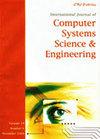利用深度学习技术的包装方法学自动诊断多囊卵巢综合征
IF 2.2
4区 计算机科学
Q2 Computer Science
引用次数: 0
摘要
多囊卵巢综合征(PCOS)是影响女性生育能力并导致严重健康问题的重要健康问题之一。因此,及时筛查多囊卵巢综合征有助于康复过程。找到一种方法来帮助医生在这个过程中是至关重要的,因为很难发现这种情况。本研究旨在确定是否有可能利用深度学习算法和方法优化PCOS的检测。此外,产生最重要的特征子集的特征选择方法可以加快计算速度并提高分类器的有效性。在本研究中,采用了三级包装方法,因为它减少了计算时间。本文提出的PCOS自动诊断研究包括预处理、数据归一化、特征选择和分类。该方案采用了包含39个特征的数据集,包括541名受试者的代谢、神经影像学、激素和生化信息。首先,本研究对信息进行预处理。接下来,对于特征选择,使用三阶段包装方法,如互信息,ReliefF,卡方和Xvariance。然后,对各种分类方法进行测试和训练。深度学习技术包括卷积神经网络(CNN)、多层感知器(MLP)、递归神经网络(RNN)和Bi长短期记忆(Bi- lstm)。实验结果表明,与其他机器学习算法相比,使用三阶段包装器方法+ CNN的有效特征提取过程具有最高的精密度(97%),较高的准确率(98.67%)和召回率(89%)。中国农业科学,2009,vol.47, no.1本文章由计算机程序翻译,如有差异,请以英文原文为准。
Automatic Diagnosis of Polycystic Ovarian Syndrome Using Wrapper Methodology with Deep Learning Techniques
One of the significant health issues affecting women that impacts their fertility and results in serious health concerns is Polycystic ovarian syndrome (PCOS). Consequently, timely screening of polycystic ovarian syndrome can help in the process of recovery. Finding a method to aid doctors in this procedure was crucial due to the difficulties in detecting this condition. This research aimed to determine whether it is possible to optimize the detection of PCOS utilizing Deep Learning algorithms and methodologies. Additionally, feature selection methods that produce the most important subset of features can speed up calculation and enhance the effectiveness of classifiers. In this research, the tri-stage wrapper method is used because it reduces the computation time. The proposed study for the Automatic diagnosis of PCOS contains preprocessing, data normalization, feature selection, and classification. A dataset with 39 characteristics, including metabolism, neuroimaging, hormones, and biochemical information for 541 subjects, was employed in this scenario. To start, this research pre-processed the information. Next for feature selection, a tri-stage wrapper method such as Mutual Information, ReliefF, Chi-Square, and Xvariance is used. Then, various classification methods are tested and trained. Deep learning techniques including convolutional neural network (CNN), multi-layer perceptron (MLP), Recurrent neural network (RNN), and Bi long short-term memory (Bi-LSTM) are utilized for categorization. The experimental finding demonstrates that with effective feature extraction process using tri stage wrapper method + CNN delivers the highest precision (97%), high accuracy (98.67%), and recall (89%) when compared with other machine learning algorithms. 240 CSSE, 2023, vol.47, no.1
求助全文
通过发布文献求助,成功后即可免费获取论文全文。
去求助
来源期刊

Computer Systems Science and Engineering
工程技术-计算机:理论方法
CiteScore
3.10
自引率
13.60%
发文量
308
审稿时长
>12 weeks
期刊介绍:
The journal is devoted to the publication of high quality papers on theoretical developments in computer systems science, and their applications in computer systems engineering. Original research papers, state-of-the-art reviews and technical notes are invited for publication.
All papers will be refereed by acknowledged experts in the field, and may be (i) accepted without change, (ii) require amendment and subsequent re-refereeing, or (iii) be rejected on the grounds of either relevance or content.
The submission of a paper implies that, if accepted for publication, it will not be published elsewhere in the same form, in any language, without the prior consent of the Publisher.
 求助内容:
求助内容: 应助结果提醒方式:
应助结果提醒方式:


